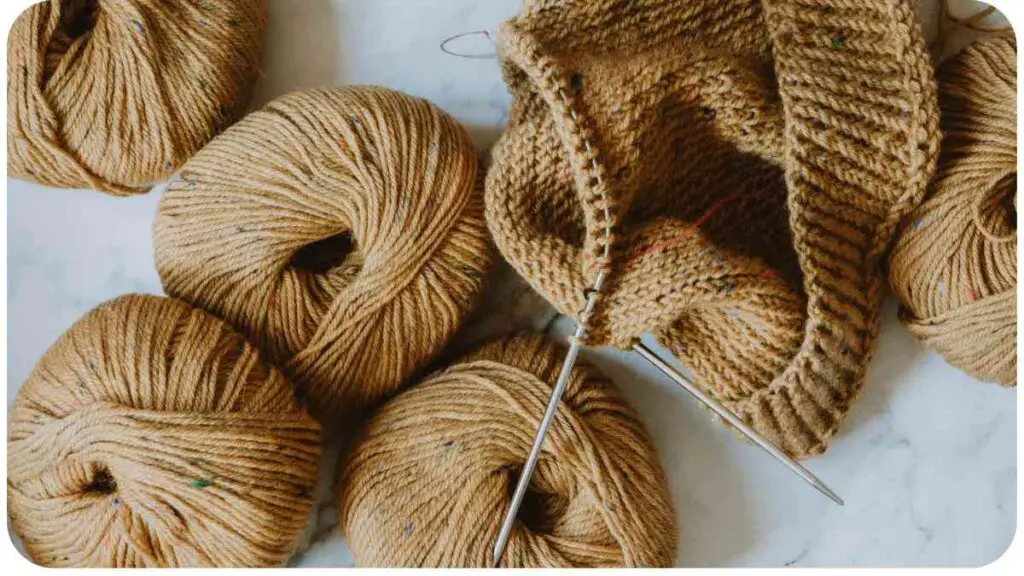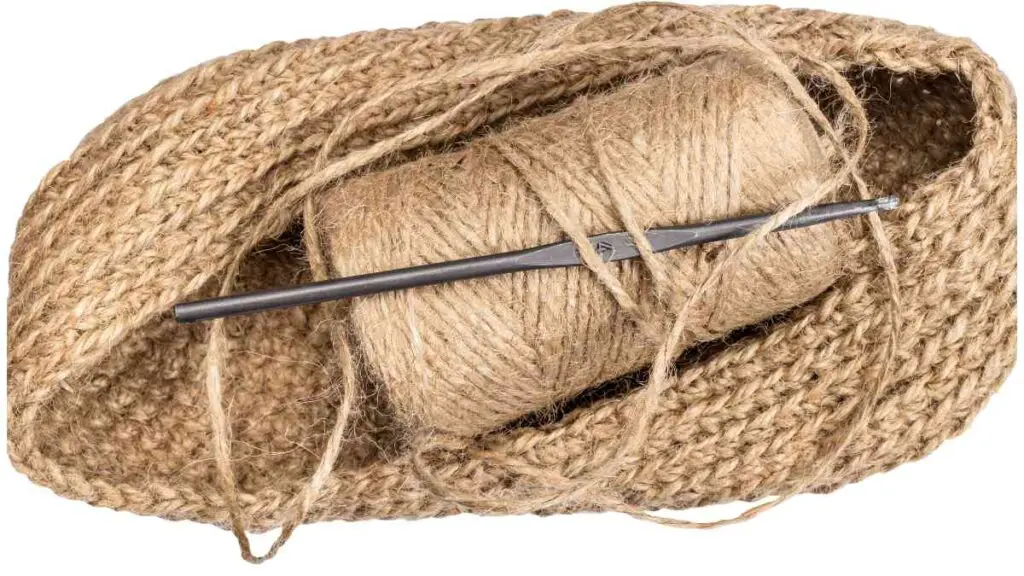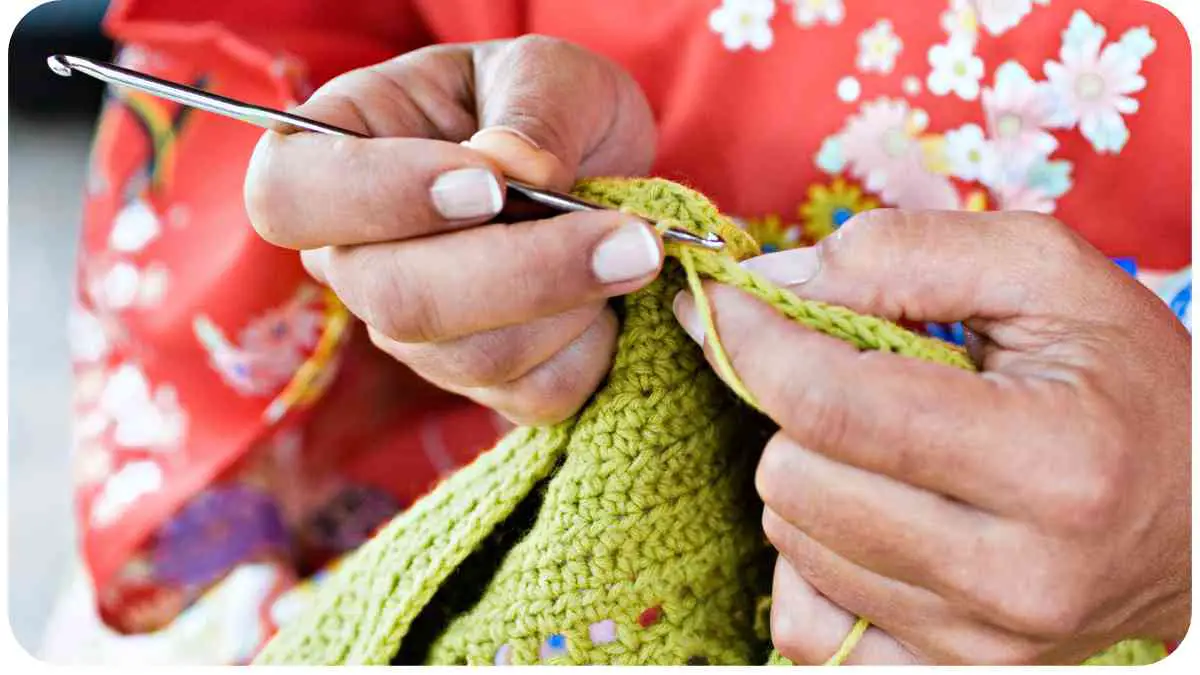Crocheting is a beloved craft that allows for the creation of beautiful and functional items, whether it’s a cozy blanket, a stylish sweater, or an intricate lace doily. However, many crocheters often encounter tension issues, which can make their stitches uneven and affect the overall appearance of their projects.
Understanding how to achieve consistent tension is essential for anyone aiming to create well-crafted crochet pieces. In this article, we will explore the common tension issues faced by crocheters, techniques to improve tension, troubleshooting tips, and expert advice to ensure your stitches are even, neat, and visually appealing.
| Takeaways |
|---|
| Achieving perfect tension in crochet is crucial for creating high-quality projects. |
| Experiment with different holding styles, such as the pencil grip or the knife grip, to find what works best for you. |
| Adjusting stitch tension by pulling the yarn tighter or looser can help achieve the desired results. |
| Practicing swatching and measuring gauge will help you identify and correct tension problems early on. |
| Utilize crochet tools like stitch markers, tension regulators, and yarn bowls to maintain consistent tension. |
| If tension issues persist, seek help from experienced crocheters or online communities for personalized advice. |
| Remember to relax, stay calm, be patient, and practice regularly to improve your crochet tension over time. |
2. Understanding Crochet Tension
Crochet tension refers to the level of tightness or looseness in your stitches. Achieving the right tension is crucial for ensuring uniformity in size and appearance throughout your project.
To enhance your crochet skills, explore essential techniques. Mastering these fundamentals ensures a strong foundation for creating beautiful and precise crochet projects.
Tension can vary from person to person, and even experienced crocheters may encounter struggles at times. By identifying the specific tension problems you face, you can address them effectively.
3. Common Crochet Tension Issues
Too Tight Stitches
Crocheting too tightly can result in stiff and inflexible stitches, making it difficult to maneuver the hook through the loops. This can also cause your finished project to be smaller than intended, and it may feel stiff or lacking drape. If you frequently find yourself struggling to insert your hook into stitches or if your work tends to curl up, you might be crocheting too tightly.
To address this issue, it helps to consciously relax your grip on both the yarn and the hook. Loosen your tension during the stitch formation, allowing the yarn to glide smoothly. Practice consistent and gentle tension to achieve more relaxed stitches.
Too Loose Stitches
On the other hand, crocheting with too loose tension can lead to stitches that are sloppy and have excessive gaps between them. Your fabric may lack structure and stability, making it less durable. If you often find the loops of your stitches are large and easy to pull apart, you may need to tighten your tension.
To improve tension when your stitches are too loose, try holding the yarn and hook a bit tighter. Ensure you wrap the yarn firmly around your fingers and apply gentle tension to the yarn as you work each stitch. Experiment with adjusting the tightness until achieving a balanced tension that provides stability and prevents loose stitches.
Uneven Stitches

Uneven stitches can give your project an unbalanced and untidy appearance. Some stitches may be taller or shorter than the others, resulting in an irregular texture. This issue can arise due to inconsistent tension throughout your work or variations in the way you form different stitches.
To create more even and uniform stitches, practice maintaining consistent tension while working on your project. Pay attention to the size of your loops and the tightness of your stitches. Working with an even rhythm and regular motions can help achieve a more consistent stitch height.
Equip yourself with the necessary tools for a seamless crochet journey. From hooks to yarn needles, this guide highlights the essentials every beginner needs to have in their crochet toolkit.
Inconsistent Tension
Inconsistent tension occurs when the tightness or looseness of your stitches varies within the same project. This can be caused by changes in your focus or mood, distraction, or simply lack of practice. Inconsistent tension can lead to visible differences in the size of your stitches and create an unprofessional finish.
To overcome inconsistent tension, be mindful while crocheting. Pay attention to the rhythm, tension, and size of your stitches. Take breaks when necessary to avoid fatigue or loss of focus. Consistency comes with practice, so aim to develop a steady technique and maintain it throughout your project.
Now, let’s delve into techniques that can help improve your crochet tension and eliminate these common issues.
4. Techniques to Improve Crochet Tension
Holding the Yarn and Hook
The way you hold the yarn and hook can greatly impact your crochet tension. Experiment with different holding styles to find the one that feels comfortable and allows for better control. Generally, there are two popular methods: the pencil grip and the knife grip.
In the pencil grip, hold the crochet hook as you would hold a pencil, with the thumb and middle finger guiding the movement. This grip offers precision and control. The knife grip involves holding the hook like a knife, with the thumb and index finger guiding the motion. Find the grip that feels natural to you and practice with it to improve your tension.
Uncover the mysteries behind uneven knitting and discover solutions to achieve a polished finish. Explore the common causes and expert tips to enhance your knitting projects.
Adjusting Stitch Tension
While crocheting, pay attention to the tension of your stitch. Adjust the tension by pulling the yarn tighter or looser to achieve the desired result. Practice creating stitches with different levels of tension to understand how it affects the final outcome. Find a balance that allows your hook to move smoothly through the loops without being too tight or too loose.
Practice Swatching
Swatching is an excellent way to practice and refine your crochet tension. Start by crocheting a small sample piece using the stitch pattern and yarn you intend to use for your project. Measure the gauge to determine if your tension matches the recommended gauge.
If not, adjust your tension accordingly and create a new swatch. Repeat this process until you achieve the correct gauge. Swatching helps you become more familiar with your tension and make the necessary adjustments before starting your project.
Navigate the world of knitting with confidence by learning how to fix common mistakes. This comprehensive guide provides step-by-step instructions to troubleshoot and improve your knitting projects.
Table 1: Common Holding Styles
| Holding Style | Description |
| Pencil Grip | Hold the hook like a pencil, with thumb and finger guiding the movement. Provides precision and control. |
| Knife Grip | Hold the hook like a knife, with thumb and index finger guiding the motion. Offers a different grip style for control and comfort. |
Using Crochet Tools

Crochet tools can assist in achieving consistent tension. Stitch markers, for example, help you keep track of your stitch count and highlight any changes in tension. Place markers at regular intervals and pay attention to any discrepancies. By identifying tension variations early on, you can correct them and maintain an even tension throughout your project.
Another useful tool is the tension regulator or yarn guide. It attaches to your finger or hook, providing a consistent amount of tension as you work your stitches. This can be especially helpful if you struggle with maintaining consistent tension on your own. Alternatively, you can utilize a yarn bowl or a properly weighted yarn holder to control the tension of your yarn.
Elevate the comfort of your projects by exploring ways to soften wool yarn. This step-by-step guide ensures your creations are not only beautiful but also luxuriously soft to the touch.
Table 2: Crochet Tools for Maintaining Tension
| Tool | Purpose |
| Stitch Markers | Help keep track of stitch counts and identify tension variations. |
| Tension Regulator/Yarn Guide | Provides consistent tension during crochet work. |
| Yarn Bowl/Yarn Holder | Controls the tension of the yarn by providing proper weight and stability. |
With these techniques and tools, you can enhance your crochet tension and create more even stitches. However, should you still encounter tension issues, the following troubleshooting tips can help you overcome them.
5. Troubleshooting Tips for Crochet Tension
Identifying the Problem
When faced with tension issues, it’s important to identify the root cause before attempting to fix it. Take a moment to examine your stitches and determine what seems off. Are they too tight, too loose, or uneven in height? Assessing the problem will guide you towards the appropriate solution.
Unraveling and Adjusting
If you notice uneven tension or mistakes in your stitches, don’t hesitate to unravel and make the necessary adjustments. It’s better to fix the issue early on rather than continuing with a project that doesn’t meet your desired standards. Unraveling allows you to correct mistakes and smooth out inconsistencies.
Counting Stitches
Counting stitches can be a helpful way to monitor your tension. Regularly count your stitches as you progress through your project to ensure consistency. If you notice a sudden increase or decrease in stitch count, it may indicate a tension problem. Double-check your tension and make adjustments if needed.
Seeking Expert Help
Sometimes, despite your best efforts, tension issues persist. In such cases, don’t hesitate to seek help from experienced crocheters or join crochet forums and communities. Engaging with others who have faced similar issues can provide valuable insights and guidance. Experts can offer tips specific to your tension concerns and may suggest techniques or adjustments you hadn’t considered.
Remember, troubleshooting tension issues takes patience and practice. Don’t be discouraged if it takes time to achieve the desired results. Keep experimenting, learning, and applying various techniques until you find what works best for you.
6. Expert Tips for Consistent Crochet Tension
Relax and Stay Calm
Maintaining a relaxed and calm mindset while crocheting can greatly influence your tension. Stress and tension in your body can transfer to your stitches, resulting in uneven tension. Take deep breaths and focus on enjoying the process. Release any tension in your hands, fingers, and shoulders to create a more even and relaxed stitch.
Take Breaks
Crocheting continuously for long periods can lead to fatigue and affect your tension. Take regular breaks to rest and stretch your fingers and hands. Stepping away from your project for a while can also provide a fresh perspective and help you identify tension issues that may have gone unnoticed.
Consistency is Key
Consistency in your crochet technique plays a vital role in achieving even tension. Determine a comfortable grip, stitch rhythm, and movement that works for you and strive to maintain it consistently. Regular practice with consistent techniques builds muscle memory, resulting in more consistent tension over time.
Patience and Practice
Improving crochet tension is a skill that requires patience and practice. Don’t be discouraged by initial setbacks or imperfections in your projects. Each project is an opportunity to refine your skills and master tension. As you continue to practice, your stitches will become more even and your confidence will grow.
By following these expert tips and implementing the techniques discussed earlier, you can overcome tension issues and create beautiful crochet projects.
7. Conclusion
Crochet tension is an essential aspect of creating beautiful and professional-looking projects. Understanding and addressing tension issues can greatly enhance the overall quality of your crochet work. By implementing the techniques discussed in this article, such as adjusting your grip, practicing swatching, and using crochet tools, you can achieve more even and consistent tension.
Remember to identify the specific tension problem you are facing, whether it’s tight stitches, loose stitches, uneven stitches, or inconsistent tension. Troubleshooting tips, such as unraveling and making adjustments, counting stitches, and seeking expert help, can help you overcome any lingering tension issues.
Expert tips, including relaxing and staying calm, taking breaks, striving for consistency, and practicing patience, are valuable reminders to help you improve your tension over time.
Crocheting should be an enjoyable and rewarding experience. By putting these techniques into practice, you can create even stitches beautifully and enhance the overall quality of your projects. Embrace the journey of improving your tension, and don’t be afraid to experiment and try new techniques. With time and practice, you will become proficient at achieving consistent tension and create stunning crochet pieces for yourself and others to enjoy.
Further Reading
Here are some additional resources that can provide more information on achieving perfect tension in crochet:
- Easy Crochet: How to Get Perfect Tension in Crochet
This article offers tips and techniques to help you achieve consistent tension in your crochet projects. It covers holding the yarn and hook, adjusting tension, and practicing swatching. - Salt & Pearl Crochet: Crochet Gauge Problems
Learn about common crochet gauge problems and how to solve them. This resource provides troubleshooting tips and techniques to help you achieve the correct gauge and tension. - Crochet Parfait: How to Keep Stitches Even
This blog post discusses various methods to keep your crochet stitches even. It covers techniques such as blocking, adjusting tension, using tools, and practicing swatching.
FAQs
Here are some frequently asked questions about crochet tension along with their answers:
How can I tell if my crochet tension is too tight or too loose?
You can determine if your tension is too tight if it’s challenging to insert your hook into stitches and your work feels stiff. If your tension is too loose, your stitches will be sloppy and have excessive gaps. Experiment with different levels of tension to find a balance that produces even and consistently sized stitches.
How can I improve my crochet tension?
Improving crochet tension takes practice and awareness. Focus on relaxing your grip, adjusting stitch tension, and practicing swatching. Experiment with different holding styles and utilize crochet tools like stitch markers and tension regulators for better control.
Why are my stitches uneven in height?
Uneven stitch height can be caused by inconsistent tension or variations in stitch formation. Practice maintaining consistent tension and working with a regular rhythm to create more even stitches. Pay attention to the size of your loops and the tightness of your stitches as you work.
How do swatches help with improving tension?
Swatching is a valuable technique for practicing and refining your tension. By crocheting a small sample piece using the same stitch pattern and yarn as your project, you can assess if your tension matches the recommended gauge. Adjust your tension as needed and create new swatches until you achieve the desired gauge.
What should I do if I can’t fix my tension issues?
If you’ve tried various techniques and still can’t fix your tension issues, don’t hesitate to seek help from experienced crocheters or online communities. They can provide guidance, tips, and personalized advice based on their own experiences. Don’t get discouraged, as improving tension takes time and practice.

My name is Hellen James, and I’m a crochet and knitting expert. I’ve been crocheting since I was just a kid, but I started taking it seriously when I realized that it was a great way to de-stress and relax. Now that I have kids of my own, I love teaching them how to do it too!

